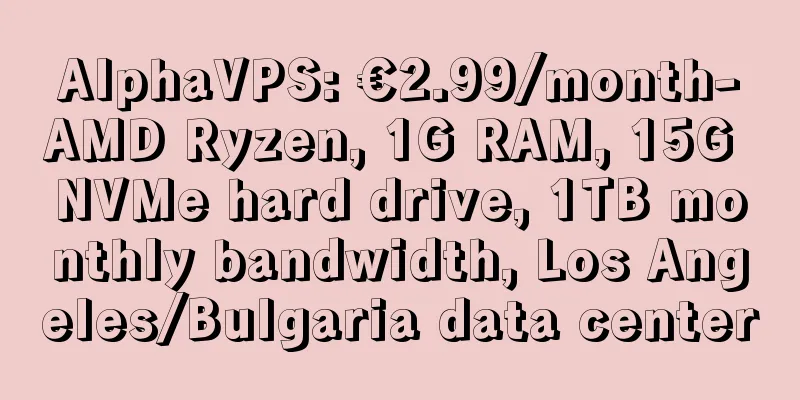Problems that edge computing needs to solve urgently

|
At present, edge computing has been widely recognized by all walks of life and has achieved results in many application scenarios. Based on the specific characteristics of edge computing, this article believes that six directions are urgent issues that need to be solved in the next few years: programming models, software and hardware selection, benchmarks and standards, dynamic scheduling, close integration with vertical industries, and the implementation of edge nodes.
1. Programming Model The programming model allows developers to quickly develop application products, thereby rapidly promoting the development of the field. In the cloud computing scenario, user programs are written and compiled on the target platform, and then run on the cloud server. The infrastructure is transparent to users. For example, Amazon's Lambda computing service based on this programming model allows users to run code without pre-configuring or managing servers, which greatly facilitates user use. However, there are significant differences between the edge computing model and the cloud computing model. From a functional perspective, edge computing is a distributed computing system with the characteristics of elastic management, collaborative execution, and heterogeneous environments, as shown in Figure 4: As shown in Figure 4, edge computing includes three key aspects:
Therefore, traditional programming models are not suitable for edge computing. Most devices in edge computing are heterogeneous computing platforms. The runtime environment and data on each device are also different. In addition, the resources of edge devices are relatively limited. It is very difficult to deploy user applications in edge computing scenarios. Li et al. designed a lightweight programming language EveryLite to address the resource constraints of edge devices. This work calls the computing tasks with limited time and space complexity in the computing migration tasks as microtasks. EveryLite can process microtasks in edge computing scenarios on the device. After experimental comparison, it can be found that the execution time of EveryLite is 77% and 74% lower than that of JerryScript and Lua, respectively. The memory usage after compilation is 18.9% and 1.4% of that of JerryScript and Lua, respectively. Therefore, there is a lot of room for research on programming models in edge computing scenarios, and it is also very urgent. 2. Software and hardware selection Edge computing systems are characterized by fragmentation and heterogeneity. At the hardware level, there are various computing units such as CPU, GPU, FPGA, ASIC, etc. Even based on the same type of computing unit, there are different complete machine products. For example, edge hardware products based on NVIDIA GPU include both DRIVE PX2 with strong computing power and Jetson TX2 with weaker computing power. In terms of software systems, for deep learning applications, there are various frameworks such as TensorFlow, Caffe, PyTorch, etc. Different software and hardware and their combinations have their own application scenarios, which brings a problem: developers do not know how to choose the right software and hardware products to meet the needs of their own applications. When selecting software and hardware, you must have a deep understanding of the computing characteristics of your application to find hardware products with computing capabilities that meet the application requirements, find a suitable software framework for development, and consider that the power consumption and cost of the hardware are within an acceptable range. Therefore, it is very important to design and implement a set of tools that can help users analyze the performance and power consumption of edge computing platforms and provide references for software and hardware selection. 3. Benchmarking procedures and standards With the development of edge computing, academia and industry have begun to launch more and more hardware or software system platforms designed for different edge computing scenarios. Then we are faced with an urgent problem, that is, how to conduct comprehensive and fair evaluation of these system platforms. Traditional computing scenarios have classic benchmarks, such as PARSEC in parallel computing scenarios, HPCC in high-performance computing scenarios, and BigDataBench in big data computing scenarios. Since edge computing is still a relatively new computing scenario, there is still no authoritative benchmark for evaluating system performance in the industry, but the academic community has begun to explore some work. SD-VBS and MEVBench are both benchmarks for evaluating machine vision workloads for mobile devices. SD-VBS selects 28 machine vision core workloads and provides C and Matlab implementations; MEVBench provides a series of visual algorithm functions related to feature extraction, feature classification, object detection and object tracking, and provides single-threaded and multi-threaded C++ implementations. SLAMBench is a benchmark for the design of mobile robot computing systems. It uses RG&D SLAM as the evaluation load and provides C++, OpenMP, OpenCL and CUDA versions for different heterogeneous hardware. CAVBench is the first benchmark for the design of edge computing systems for intelligent connected vehicles. It selects 6 typical applications on intelligent connected vehicles as evaluation functions and provides standard input data sets and application-system matching indicators. Due to the wide coverage of edge computing scenarios, in the short term there will not be a unified benchmark set that can adapt to edge computing platforms in all scenarios. Instead, there will be a classic benchmark set for each type of computing scenario. After that, the benchmark sets will be integrated and borrowed from each other to find out several types of core loads in edge computing scenarios, and finally form a classic benchmark set in edge computing scenarios. 4. Dynamic Scheduling In cloud computing scenarios, the general strategy for task scheduling is to migrate computing-intensive tasks to computing nodes with sufficient resources for execution. However, in edge computing scenarios, the massive data generated by edge devices cannot be transmitted to cloud computing centers for centralized computing through existing bandwidth resources, and the computing and storage capabilities of different edge devices are different. Therefore, the edge computing system needs to be dynamically scheduled based on the task type and the computing power of the edge device. Scheduling includes two levels:
There are two ways to schedule between cloud computing centers and edge devices: bottom-up and top-down. Bottom-up is to pre-process part or all of the data collected or generated by edge devices at the edge of the network, filter out useless data, and reduce the transmission bandwidth; top-down means to divide the complex computing tasks performed by the cloud computing center and then assign them to edge devices for execution, so as to make full use of the computing resources of edge devices and reduce the latency and energy consumption of the entire computing system. In 2017, Kang et al. designed a lightweight scheduler Neurosurgeon, which can automatically allocate computing tasks at different layers of deep neural networks between mobile devices and data centers, reducing the power consumption of mobile devices by up to 94.7%, speeding up system latency by up to 40.7 times, and increasing the throughput of data centers by up to 6.7 times. Dynamic scheduling is also required between edge devices. The computing and storage capabilities of edge devices are different and will change over time, and the types of tasks they undertake are also different. Therefore, it is necessary to dynamically schedule tasks on edge devices to improve the overall system performance and prevent computing tasks from being scheduled to a device that is overloaded with system tasks. Zhang et al. designed an edge task scheduling framework, C〇GTA, for delay-sensitive social perception tasks. Experiments have shown that the framework can meet the needs of applications and edge devices. In summary, the goal of dynamic scheduling is to schedule computing resources on edge devices for applications to minimize data transmission overhead and maximize application execution performance. When designing a scheduler, you should consider: whether the task is splittable and schedulable, what strategy should be adopted for scheduling, which tasks need to be scheduled, etc. Dynamic scheduling needs to find a balance between indicators such as edge device energy consumption, computing delay, transmission data volume, bandwidth, etc. According to current work, how to design and implement a dynamic scheduling strategy that effectively reduces the execution delay of edge device tasks is an urgent problem to be solved. 5. Close cooperation with vertical industries In the cloud computing scenario, users from different industries can transfer their data to the cloud computing center, which will then be handed over to computer practitioners for data storage, management, and analysis. The cloud computing center abstracts the data and provides access interfaces to users. In this model, computer practitioners are decoupled from the user industry and can focus more on the data itself without having to learn too much about the user industry. However, in the edge computing scenario, edge devices are closer to data producers and have a closer relationship with vertical industries. The design and implementation of edge computing systems requires a lot of domain expertise. On the other hand, vertical industries are in urgent need of using edge computing technology to improve their competitiveness, but they are faced with the problem of insufficient computer expertise. Therefore, computer practitioners must work closely with vertical industries to better complete tasks and design computing systems that can be used at the grassroots level. When cooperating with vertical industries, three issues need to be addressed:
6. Edge node landing issues The development of edge computing has attracted widespread attention from the industry. However, in the actual deployment of edge nodes, some urgent problems have also emerged, such as how to establish a business model suitable for edge computing, how to select edge nodes and edge computing data involved in computing, and how to ensure the reliability of edge nodes. 1) New business model. In the cloud computing scenario, cloud computing companies are providers of computing services. They collect, store, and manage data and are responsible for the construction and maintenance of software, hardware, and infrastructure. Users pay for services and do not need to pay attention to the cost of the computing nodes themselves or the upgrade process of service quality. This business model brings convenience to users in using cloud services and makes cloud computing companies profitable, thereby better improving service quality. In the edge computing scenario, edge nodes are distributed close to data producers and are geographically discrete, which makes it difficult to maintain the uniformity of edge nodes and also brings difficulties to software and hardware upgrades. For example, cameras that provide security services need to upgrade their software and hardware during use. Software upgrades can be performed uniformly through the network, while hardware upgrades require on-site visits. Relying on service providers to upgrade and maintain the hardware of each edge node (camera) will bring huge costs, and service users generally do not pay attention to or are not familiar with the maintenance of hardware equipment. For example, in the application of CDN services, it is necessary to consider whether the CDN server is configured on a household or campus basis. Different configuration methods will bring about changes in costs and add uncertainty to the stability of service quality. The cost of maintaining CDN needs to consider whether the payer is the service provider or the user. Therefore, the industry needs to seek one or more new business models to clarify the responsibilities of edge computing service providers and users, such as who will pay for the establishment and maintenance of edge nodes and who will lead the process of software and hardware upgrades. 2) Selection of edge nodes. Edge computing is a continuum, and edge refers to any computing and network resources between the data source and the cloud computing center. (In actual applications, users can choose any edge node on the entire cloud-to-end link to reduce latency and bandwidth. Due to the differences in computing power and network bandwidth of edge nodes, the selection of different edge nodes will lead to large differences in computing latency. Existing infrastructure can be used as edge nodes. For example, when using handheld devices to access communications, first connect to the operator's base station and then access the backbone network. This method of using existing infrastructure as an edge node will increase latency. If the handheld device can bypass the base station and directly access the edge node of the backbone network, the latency will be reduced. Therefore, how to choose a suitable edge node to reduce communication latency and computing overhead is an important issue. In this process, it is necessary to consider how the existing infrastructure can be integrated with the edge nodes. Will edge computing technology build an emerging ecological environment and bring revolutionary changes to the existing infrastructure? 3) Edge data selection. There are many edge nodes, and the amount and type of data generated are also numerous. These data overlap with each other, and there are often multiple solutions to a problem. For example, in real-time road condition monitoring applications, data can be obtained using cameras on the vehicle, real-time data statistics of traffic lights can be used, and roadside computing units can be used to calculate vehicle speed. Therefore, how to reasonably select data from different data sources for specific applications to minimize latency and bandwidth and improve service availability is an important issue. 4) Reliability of edge nodes. Most of the data storage and computing tasks in edge computing rely on edge nodes. Unlike cloud computing centers that have stable infrastructure protection, many edge nodes are exposed to the natural environment. It is very important to ensure the reliability of edge nodes. For example, public safety solutions based on computer vision need to rely on smart cameras for storage and computing. However, under extreme weather conditions, cameras are easily physically damaged. For example, stormy weather will change the angle of the camera, and blizzard weather will affect the visual range of the camera. In such scenarios, the physical reliability of edge nodes needs to be guaranteed with the help of infrastructure. At the same time, edge data has spatiotemporal characteristics, which leads to strong uniqueness and irrecoverability of data. It is necessary to design a reasonable multiple backup mechanism to ensure the data reliability of edge nodes. Therefore, how to use infrastructure to ensure the physical reliability and data reliability of edge computing nodes is an important research topic. In the process of implementing edge nodes, there have been many attempts. For example, China Unicom proposed to build an edge cloud, and it plans to build 6,000 to 7,000 edge nodes by 2020, sinking high-bandwidth, low-latency, and localized services to the edge of the network to further improve network efficiency and enhance service capabilities. Therefore, it is very urgent to study how to select edge nodes, handle the relationship between edge nodes and existing infrastructure, and ensure the reliability of edge nodes. |
<<: Elegantly read http request or response data
>>: This move can save tens of billions of yuan in 5G construction!
Recommend
Not enough data? Facebook will help you find free WiFi nearby
[[177139]] According to foreign media reports, Fa...
[Double Holiday] edgeNAT: VPS monthly payment 30% off, annual payment 40% off, US/Hong Kong/Korea CN2 VPS monthly payment starts from 42 yuan
2023 is coming to an end. edgeNAT is offering a s...
How many people can't tell the difference between wireless charging and wireless power supply?
Wireless charging is very popular recently, and m...
Google’s former CEO said that “the United States lags behind China in the 5G competition”, but don’t ignore the United States’ latecomer advantage!
Recently, former Google CEO Eric Schmidt and Harv...
Yan Wangjia, a member of the National Committee of the Chinese People's Political Consultative Conference, submitted five proposals to the two sessions, calling for strengthening information security supervision
[51CTO.com original article] On March 3, the firs...
GSMA: 5G SA and 5G-A are booming, and operators will continue to increase investment
According to a research report released by the Gl...
Huawei has done four "small things" to achieve intelligent evolution with its ecosystem partners and win-win ecosystem
[51CTO.com original article] This morning, Huawei...
CloudCone New Year Promotion: $10.99/year KVM-512MB/20GB/2TB/Los Angeles Data Center
CloudCone has updated its 2023 promotional progra...
How Fiber Optic Networks Can Boost Small Business Operations
What is Fiber Optic? This is a form of internet t...
VMISS 30% off: Los Angeles/Japan/Hong Kong VPS monthly payment starts from 3.5 Canadian dollars (≈ RMB 18 yuan)
VMISS is a new merchant founded in Canada. It cur...
ExtraVM 30% off, AMD Ryzen+NVMe+1Gbps unlimited traffic, multiple computer rooms in Los Angeles and other places
ExtraVM recently launched a promotion on WHT, off...
How long will it take for 5G small base stations to "take off"?
In the era of rapid changes in information and co...
Chrome downloads are so annoying! Here's how to fix it
Chrome is the most popular web browser in the wor...
CloudCone Black Friday promotion, KVM annual payment starts from $14.2, supports Alipay, Los Angeles data center
CloudCone has once again released this year's...
This article teaches you how to use C code to parse a network data packet?
[[416402]] The purpose of this article is to rand...









